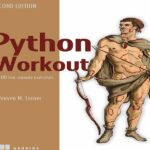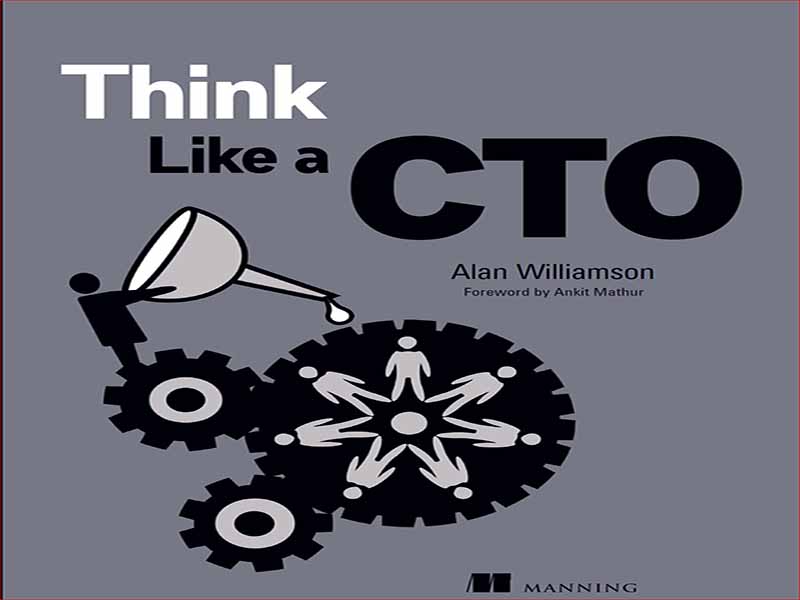- عنوان کتاب: Think Like a CTO
- نویسنده: Alan Williamson
- حوزه: مدیر تکنولوژی
- سال انتشار: 2023
- تعداد صفحه: 320
- زیان اصلی: انگلیسی
- نوع فایل: pdf
- حجم فایل: 22.1 مگابایت
مدیر ارشد فناوری یکی از هیجانانگیزترین و پر ارزشترین نقشهایی است که یک تکنسین میتواند در حرفه خود ایفا کند. این موقعیت میتواند یک شرکت را تعریف کند، فرصتهای جدیدی را ایجاد کند، خطوط تولید جدید ایجاد کند، گردش کار را بهبود بخشد و تأثیر زیادی در تمام بخشها داشته باشد. اگر این یک بازی شطرنج بود، ما به مدیر اجرایی (مدیرعامل) به عنوان پادشاه و مدیر ارشد مالی (CFO) به عنوان ملکه، که قدرتمندترین مهره روی تخته است، اجازه حرکت در هر جهت را داشتیم. و به تعداد مربع های دلخواه. این در تجارت نیز صدق می کند، زیرا مدیر مالی در هر تصمیمی که در مورد پول وارد یا خارج از شرکت می شود، دخیل است. کجا CTO را ترک می کند؟ من دوست دارم CTO را به عنوان روک (قلعه)، قوی ترین قطعه بعدی بدانم، زیرا آنها پشتیبانی را برای بقیه قطعات فراهم می کنند تا در اطراف تخته حرکت کنند و مسیرهای دوردست را باز کنند. با این حال، با این همه قدرت و مسئولیت، این نقشی است که اکثراً برای آن آماده نیستند، و بسیاری نمی دانند که چقدر برای آن وجود دارد، به ویژه در معماری مدرن امروزی. این نقش نه تنها بر تحقیق، توسعه و اجرای فناوری شرکت نظارت میکند، بلکه اجرا، صدور مجوز، انطباق و نظارت مستمر امنیتی محیط تولید را نیز پوشش میدهد. در دنیایی از شبکههای همیشه متصل، دستگاههای متصل در هر شکل و اندازه، و کارمندان اداری، خانگی و راه دور، چالشهای پیش روی CTO امروزی بسیار فراتر از آن چیزی است که مدیران ارشد فنی دهههای ۸۰ و ۹۰ با آن مواجه بودند. اگر این کافی نیست، ما در صنعتی کار می کنیم که به طور مستمر خود را دوباره اختراع می کند و هر پنج سال یک بار دستخوش تغییرات لرزه ای در ابزارها و فرآیندهای ما می شود، از محاسبات متمرکز (با مین فریم) گرفته تا رایانه رومیزی تا اینترنت. همراه با وب، مرورگر نیز آمد و از ابزاری برای مشاهده محتوای ثابت به یک پلتفرم کامل و غنی به خودی خود تبدیل شد. ما شاهد ظهور محاسبات تلفن همراه در قدرت و عملکرد هستیم. ما دیدهایم که رایانش ابری بهسرعت بهسرعت تسخیر شده و تکامل مییابد تا جایی که یک کارت اعتباری میتواند زیرساخت کاملی از قطعات سازمانی را اجرا کند که پیشینیان ما حتی نمیتوانستند رویای آن را ببینند. فضای ذخیره سازی بی حد و حصر است و دنیای جدیدی از فرصت ها را در تجزیه و تحلیل داده ها ایجاد می کند که با یادگیری ماشین و هوش مصنوعی کامل می شود. دستگاهها کوچکتر و متصلتر میشوند و اینترنت اشیا تقریباً به همه چیزهایی که قدرت دارند (و برخی که ندارند) راه مییابند. بلاک چین دنیایی از باز بودن و شفافیت را در تعاملات ما ترویج می کند. زبانها و چارچوبها غنیتر و سریعتر میشوند. یک توسعهدهنده نرمافزار متوسط آنقدر از تدارکات مدیریت CPU و حافظه دور است که برخی حتی متوجه نمیشوند محدودیتهایی دارند – اگر کد کندتر اجرا شود، گاهی اوقات افزایش قدرت پردازش ارزانتر از صرف زمان برای بهینهسازی الگوریتمها است. علاوه بر این، هکرها دائماً سیستم های ما را تهدید به حمله می کنند. باج افزار بیشتر خدمات عمومی ما را فلج می کند و به وضوح نشان می دهد که چگونه یک شرکت با معماری ضعیف می تواند یک کشور را به زانو درآورد. ما شاهد این بودیم که هکرها خط لوله نفت در ساحل شرقی ایالات متحده را در ماه مه 2021 از بین بردند و منجر به کمبود گاز شد و هیچ ایستگاهی برای بیش از یک هفته سوخت دریافت نکرد. این یک مورد مجزا نبود. تصور کنید در آن صبح به عنوان مدیر ارشد فناوری مسئول فناوری خط لوله از خواب بیدار شوید – اصلاً از کجا شروع می کنید؟ چه یک CTO با تجربه باشید، چه در این نقش تازه کار باشید، چه مسئولیت را از شخص دیگری به عهده بگیرید، یا مدیر عاملی باشید که در تلاش برای تعیین اینکه آیا به یک مدیر ارشد فنی نیاز دارید یا خیر (به هر حال پاسخ به آن بله است)، این موقعیت چیزهای بیشتری دارد. بیشتر از آن چیزی که متوجه می شوند مهم نیست اندازه شرکت، از یک استارتاپ دو نفره گرفته تا سازمانی با هزاران کارمند، مسئولیت گسترده است.
Chief Technology Officer is one of the most exciting and rewarding roles a technologist can take on in their career. The position can define a company, open up new opportunities, create new product lines, improve workflow, and have a huge impact across all departments. If this were a game of chess, we would have the Chief Executive Officer (CEO) as the king and the Chief Financial Officer (CFO) as the queen, which is the most powerful piece on the board, being allowed to move in any direction and for as many squares as desired. This is true in business, too, with the CFO being involved in every decision relating to money either coming into or going out of the company. Where does that leave the CTO? I like to think of the CTO as the rook (the castle), the next most powerful piece, because they provide the support for the rest of the pieces to move around the board, clearing paths into the distance. Yet with all this power and responsibility, it is a role that most are unprepared for, with many not realizing just how much there is to it, especially in today’s modern architecture. Not only does the role oversee the research, development, and implementation of the company’s technology, it also covers the execution, licensing, compliance, and continued security monitoring of the production environment. In a world of always-on-always-connected networks, linked devices of all shapes and sizes, and office, home, and remote workers, the challenges facing today’s CTO are way beyond what the CTOs of the ’80s and ’90s faced. If that isn’t enough, we work in an industry that continually reinvents itself, undergoing seismic changes in our tools and processes every five years, from centralized computing (with mainframes) to desktop computing to the internet. Along with the web came the browser, evolving from a tool to view static content to a complete, rich platform in and of itself. We have seen the advent of mobile computing grow in power and functionality. We have seen cloud computing take over and evolve extremely rapidly to the point where a credit card can run a whole infrastructure of enterprise pieces that our predecessors couldn’t even dream of. Storage is limitless, creating a whole new world of opportunities in data analysis, complete with machine learning and artificial intelligence. Devices are getting smaller and more connected, with the Internet of Things finding its way into nearly everything that has power (and some that don’t). Blockchain is promoting a world of openness and transparency in our interactions. Languages and frameworks are getting richer and faster. The average software developer is so far removed from the logistics of managing CPU and memory that some don’t even realize they have limitations—if code runs slower, it is sometimes cheaper to increase the processing power than to spend time optimizing the algorithms. In addition, hackers constantly threaten to attack our systems. Ransomware cripples more of our public services, clearly demonstrating how a poorly architected enterprise can bring a country to its knees. We witnessed this when hackers took out the oil pipeline on the East Coast of the United States in May 2021, resulting in gas shortages, with no stations getting fuel for over a week. This was not an isolated case. Imagine waking up as the CTO in charge of that pipeline technology on that morning—where do you even begin? Whether you are a seasoned CTO, new in the role, taking over from someone else, or a CEO trying to determine whether you need a CTO (yes is the answer to that, by the way), there is a lot more to this position than most realize. No matter the size of the company, from a two-person startup right up to an organization with thousands of employees, the responsibility is wide.
این کتاب را میتوانید بصورت رایگان از لینک زیر دانلود نمایید.
Download: Think Like a CTO



































نظرات کاربران